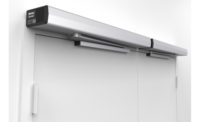This year’s SDM Systems Integrator of the Year will come as no surprise to anyone paying attention to the mergers & acquisitions market recently. But the name may seem less familiar. Pavion (a mashup of the words pavise, a medieval shield, and ion, an electrically charged atom or molecule) represents the company’s new motto: “Protection and Connection in Motion.” This is also a good description of what the company formerly known as CTSI has been doing for the past 15 months — protecting and connecting its customers while in a constant state of motion itself.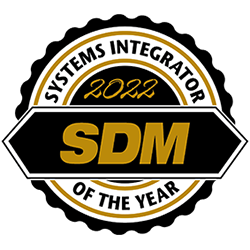
Pavion CEO Joe Oliveri compares this process to “changing the wheels of the bus while driving.” But that is exactly how he and his team planned it.
Corbett Technology Solutions Inc. (CTSI) was established in 1969 by brothers Christopher and Dennis Corbett with the mission to deliver security, cabling, public address and other low-voltage systems for retail, government and commercial customers in the D.C. Metro market. Chris Corbett assumed total control of the business in 1983 along with his wife Merrie Corbett.
2022 Systems Integrator of the Year: At a Glance
Employees:
1,700
2022 Revenue:
$580,000,000 (est.)
2022 SDM Top Systems Integrator Report Ranking:
No. 3
In 2000, Corbett recruited Gino Ruta to run the day-to-day operations while he took a more background role. During this period, the business continued steady organic growth and began a series of small strategic acquisitions.
Then in 2017, the $58 million business was recapitalized by private equity firm Tower Arch Capital. Chris Corbett retired and became a member of the board of directors and Ruta ascended to president and CEO. Between 2017 and 2020, CTSI acquired Baltimore Sound Engineering in Baltimore, Md., and Communications Specialists Inc. in Richmond, Va., enabling CTSI to become a true Mid-Atlantic systems integration powerhouse with national reach.
By 2020 the company had not only met but exceeded Tower Arch’s goals for the company, says Alan Rosenkoff, vice president of business development, communications and corporate marketing for Pavion. “The objective was to double the business in about five years and we by far accelerated that and did it in about 3 years instead.”
Now exceeding $100M in revenue, CTSI went for another private equity turn and was picked up by Wind Point Partners in June of 2020 in the midst of a global pandemic, something Rosenkoff says was a clear indication that they had high confidence that CTSI would be a good platform for continued growth.
They were not wrong.
Wind Point’s approach to its acquisitions is to bring on executives to their board who know the industry and also to recruit experienced CEOs, which is how Joe Oliveri, a former vice president and general manager of Johnson Controls, was named CEO in May 2021, following Ruta’s planned retirement and move to the board.
“Any one of these companies we are buying you can always find an excuse why not to do it. Our job is to find a reason why. Some of the riskier ones turn out to be the best.”
- JOE OLIVERI
“They were looking for someone very much experienced in our business and we are very grateful to have Joe at the helm as CEO,” Rosenkoff says. “He has brought some really fresh leadership to the business.”
Oliveri hit the ground running. “After talking to Wind Point and the board, I knew we wanted to grow the company fast, and it would not only be fun but I knew we could do it. Wind Point’s goal originally was three or four smaller acquisitions a year. That was never my goal. Mine was to grow at a much faster rate than they had planned.”
At 10 acquisitions (and counting) since the Wind Point partnership began — including several large national and international integration companies — the newly named Pavion shows no sign of slowing down. The company grew an astounding 227 percent in 2021, moving up from No. 26 to No. 3 on the 2022 SDM Top Systems Integrators Report. Now serving customers from 41 U.S. locations and 22 countries, Pavion is a $500 million company, with the ambitious goal to get to $1 billion within the next year or two.
The story of how they have accomplished this feat, kept 98 percent of the acquired employees, continued and improved service to customers, and restructured the resulting much larger company into a single entity, all in the midst of a global health and supply chain crisis, is why Pavion has been chosen as this year’s SDM Systems Integrator of the Year.
From High Achiever to Super Acquirer
Oliveri joined Pavion (then CTSI) May 18, 2021. At that point the company had recently acquired the security division of Electrical Controls & Maintenance (EC&M) in February. On May 25, Pavion acquired DavEd Fire Systems, followed by nine more to date, including such industry stalwarts as The Protection Bureau, Star Asset Security, AFA Protective Systems and Structure Works, as well as a number of smaller companies. How did they accomplish this?
Oliveri credits early advice he received from the Wind Point board.
“At first when we started I was really concerned about P&L and adding cost too quickly to the business,” Oliveri says. “[The board] shared with me that, ‘You are making a mistake if you don’t build up integration and synergy teams well in advance. Don’t skimp on this.’ I went against my comfort zone and added several resources to the team to get us ready. It is the best move and advice I received because now we have a cookbook and a timeline. All we need to do is fill out the steps and the team goes and does it.”
One of these team members is Susan Post, vice president of operations, who has been with the organization since last summer. Pavion brought her in to lead the integration team, which is involved in the entire process of acquisition from due diligence to incorporating the new acquisition into the larger Pavion entity.
“It makes for interesting conversation when we talk about what we have done over the last 10 months,” Post says. “It is somewhat unheard of. Our average time to acquire and close is something like 70 days.”
She cites one of Oliveri’s well-known phrases — “Be fast and good, not slow and perfect” — as the company approach to the acquisition process.
Podcast: A Conversation With Pavion CEO Joe Oliveri
SDM spoke at length with Joe Oliveri in preparation for this article. Listen to a portion of that conversation where he talks acquisition strategy and future plans.
This working attitude came in especially handy last December when CTSI closed on three separate acquisitions the week of the Christmas holiday in 2021, including one of its largest to date, Structure Works (ranked No. 10 on the 2021 SDM Top Systems Integrators Report). “What could go wrong?” Post says. “We were talking about wire transfers on Christmas Eve. We all thought we were crazy, but sometimes that is the timing you are dealt.”
One reason for the “crazy” timing was the political and economic environment. With fears that capital gains taxes would rise drastically after the new year, many companies who were thinking of selling within the next year accelerated their timeline.
“The right companies became available to us, and I would love to say we had a great strategy, but a lot of it was being opportunistic,” Oliveri acknowledges.
But it was opportunity with a strategic backbone.
Oliveri describes the typical acquisition process Pavion follows this way: “We talk [to potential acquisitions] about our vision and goals to spark interest. Typically within a day or two we have an NDA out and turn that into a letter of intent within a week to 10 days; and we close within 60-75 days. From day one to fully onboard is about 90 days. That is very quick, but a lot of owners like that. They see we mean business and we are decisive. We don’t let the little details get in the way. There are 100 items you have to work through and we are committed to getting them done.”
“We aren’t just buying any company. We want to make sure it matches our culture and what we want to achieve. This amount of acquisitions in 12 months is incredible, but that is why it has worked so well.”
- SERGIO KATZ
Heading the acquisitions team is another industry veteran, Sergio Katz, vice president of mergers and acquisitions, who was literally on a mountain when he got the call from Oliveri a year ago. “I was in South America and I get off this 23,000-foot mountain to see six missed calls from Joe. He said, ‘I am going to be CEO of CTSI. … I need your help to build the strategy for M&A.'”
Katz says the resulting strategy involves making the right choice of acquisition. “We aren’t just buying any company. … We want to make sure it matches our culture and what we want to achieve. This amount of acquisitions in 12 months is incredible, and that is why it has worked so well.”
Pavion is very careful when integrating acquisitions, including inviting former owners and/or senior leadership to continue on and often join the leadership team. Pictured: Joe Oliveri (left) and Jim Muncey (former CEO of Structure Works and current Pavion security business unit president). // IMAGE BY EMILY FRANCES OLSON FOR SDM
Another keystone of the strategy is to keep the original owners, or senior management if the owner is retiring, in place — a method that helps ensure buy-in from both employees and loyal customers.
“They want to stay,” Katz says of most of the owners. “We are offering them an opportunity to grow their company. A lot of smaller companies built this from nothing and this is their baby. We tell them, ‘You can continue to be attached to your baby, and let us help you out [with resources].'”
Pavion much prefers to keep leadership whenever possible, Oliveri echoes. “We have been very lucky so far that the owners either stayed or had someone on their team ready to step up. We like to have them stay because their team understands them; they are loyal to them; and it helps with a nice transition.”
It also helps with future acquisitions, he says. “Word travels pretty fast how you treat them. Two of the deals we recently sourced came to us because we did a really good job with past acquisitions. These owners talk to each other.”
The final piece of the acquisition roadmap involves transitioning that leadership into a larger role within Pavion overall, with a few key people from the larger acquisitions put in charge of newly reorganized business units, as was the case with Structure Works’ founder and CEO, Jim Muncey, now president of the security business unit at Pavion.
“We were looking to sell and went out and talked to the [big names] of the integration world,” he says of his experience with the acquisition. “We kind of knew what the others would do with us, how they roll acquisitions up and bring them out to market. Pavion seemed more appetizing to us because we would continue driving our business and everyone on our team would stay in place. It would be business as usual. And Pavion would enable us to continue our international expansion and support customers across the Americas, EMEA and APAC regions.”
The Management Team
Joe Oliveri:
CEO
Silvi Hernandez:
Chief Financial Officer
Susan Post:
Vice President, Operations
Sergio Katz:
Vice President, Mergers & Acquisitions
Dana Smith:
Chief Human Resources Officer
Alan Rosenkoff:
Vice President Business Development, Communication & Marketing
Dave Wrigley:
Vice President, Sales
Will Seifert:
President, Integration Business Unit
Jim Muncey:
President, Security Business Unit
Mark LaBua:
Chief Information Officer
Mike Slattery:
Vice President/General Manager, Fire Business Unit - AFA
Mark LaBua:
Chief Information Officer
Ralph DioGuardi:
Vice President/General Manager, Fire Business Unit - Firecom
Muncey adds that what Pavion is doing with acquisitions is a little different than some other big integration companies. "We are a different model. We are trying to build value by combining and integrating our entire business and corporate functions together. It is not easy ... but building a half billion dollar company in half a year is pretty big.”
The reasoning behind the initial spate of acquisitions was largely to fill out capabilities with the goal to do more security, integration and fire work in-house as well as to add capabilities, such as Star Asset’s ION247 center, which brought additional video monitoring and cybersecurity capabilities, or The Protection Bureau’s managed services.
Next, Pavion looks to fill out customer needs geographically.
“You can’t be afraid to take risks,” Oliveri says. “Any one of these companies we are buying you can always find an excuse why not to do it. … Our job is to find a reason why. Some of the riskier ones turn out to be the best.”
From CTSI to Pavion
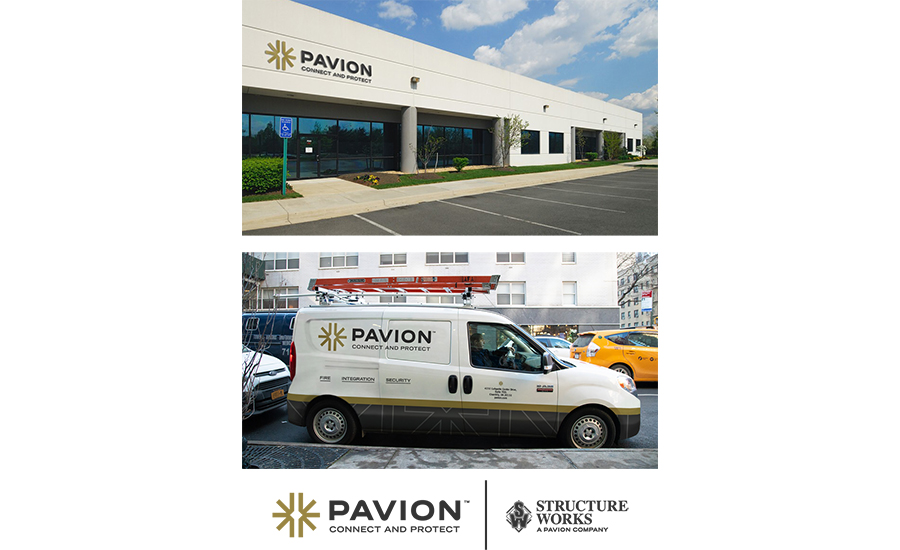
Pavion has already begun the branding process for its new name, although the full changeover will take 12-18 months to complete. Acquired companies will use a Pavion logo with their legacy logo to help the transition, such as the Structure Works example above. // IMAGE COURTESY OF PAVION
At the time of publication, CTSI was just beginning to roll out a new name, Pavion, officially launching Oct. 7, 2022. How that name came about was a process that ultimately involved every employee in the company.
Joe Oliveri and Alan Rosenkoff started by hiring a firm to help build the new brand. After a couple of rounds of names for the leadership team to consider, they solicited names from the field and took it to a company-wide vote.
“We didn’t just want the input of senior managers who might think alike,” Oliveri says. “We wanted everyone’s feedback. It was really important to get the name right.”
The winning choice — by more than 70 percent of the vote — was Pavion, Rosenkoff says.
“Pavion comes from the prefix Pavise, a full-body shield warriors used to protect themselves when moving forward in battle. The suffix ion demonstrates an electric charge driving motion, and forward momentum. Pavion is protection in motion; and its purpose is to protect life and accelerate connections.”
But going from a theoretical name change to one that will be universally recognized is no easy task for a company that already has multiple identities from its acquired companies.
“Pavion is being launched as the parent company, with the mission to pull together all the companies we have acquired into three business units,” Rosenkoff explains. “It’s not about being something new, it’s about being more of what makes us great.”
To that end, all the businesses will start out branding themselves as “AFA, a Pavion company,” or “CTSI, a Pavion company” for the next 12-18 months, he says.
“We are doing it that way for two reasons: one is we want to honor the brands of the businesses we have acquired because of the legacy brand equity,” Rosenkoff says. “As leader of our marketing it is really important that we manage this transition to ensure we don’t lose any of that, while we aggressively introduce Pavion into the market.”
“Over time we will retire the legacy brands,” Rosenkoff says. “But we will do that when the time is right and when we feel Pavion has gained sufficient market acceptance.”
Many of the leaders of the acquired companies were initially skeptical; but as they have seen the way Rosenkoff and his team are handling this, one by one they have come around.
“The end purpose is to make it easier for clients to understand and realize we are one organization they are working with,” Seifert says. “The tough thing is you don't want to lose the reputation and identity of the brand, but having the one name we all reference conveys a consistant message to the customer. They still get the same end result and the name they trusted is there along with the new name that ties it all together.”
That is exactly what Rosenkoff is hoping for across the board.
“We want the employees to really be proud of the work we have done and the brand we have created,” he says. “And in my heart of hearts I genuinely believe this is going to be a really powerful brand in the market.”
‘Business as Usual’
Getting through the fast-paced acquisition process is only step one of the challenge Pavion has taken on in the past year. The trickier part is integrating 10 new businesses — and their employees — into a common culture and purpose.
At the end of 2020, CTSI had 145 full-time employees and four business locations, according to the 2021 SDM Top Systems Integrators Report. As of October 2022, the company has almost 1,700 employees and 41 locations in the U.S. alone.
In spite of this, Rosenkoff says the company culture hasn’t changed significantly. Rosenkoff worked for CTSI in the ’90s, before leaving for other opportunities, then coming back in 2017, at the encouragement of Chris Corbett, who he had remained close to over the years.
“What is it like working at Pavion today? It is very similar to what it was like working for CTSI before,” he says. “The business is larger and as a result there is a bit more structure. There is much greater depth of resources and there is an amazing amount of focus on the customer experience, which has been consistent across all of our businesses. … Now the focus is integrating those great companies into three business units that are common in the technology solutions they deliver and the method in which they serve customers, to do it consistently and in alignment with our purpose of protecting life and accelerating connections… and to integrate those businesses so they are on the same IT system, the same CRM, the same ERP, etc. We are harmonizing our product portfolio and how we deliver service to ensure that if a customer has an experience with our fire business unit it will be a similar experience with our integration and security business.”
“Part of our strength comes from the fact that when you acquire a number of family-owned businesses you need to make sure you honor the legacy of those organizations and do your best to protect that while helping people understand what we are trying to transform into.”
- DANA SMITH
In his role in communications and corporate marketing Rosenkoff is in a position to see things not just from his own personal experience, but also from the perspective of each newly acquired company. “As we grow we are trying to maintain the culture and the legacy that made us who we are today and not lose sight of the agility, being nimble, being responsive and focused on the customer,” he explains. “That is what each of our businesses — CTSI, AFA, Structure Works, Protection Bureau and on down the list — have done as well. I have been fortunate to meet with each one of the business unit presidents, or former owners and now leadership in preparation for communications and press releases and really have meaningful one-on-one conversations on who their businesses are and who they are as leaders. We’ve found that there is a common culture around the businesses we acquired. Sergio and Joe made sure we had the right cultural fit prior to making an acquisition decision. They acquire successful businesses that honor the fact that the customer is at the center of everything we do.”
The concept of keeping management intact was not new to these recent acquisitions, says Will Seifert, president of the integration business unit, who came from the original CTSI company by way of his company being acquired back in 2013.
“The core of what we do and the day to day hasn’t changed at all, other than all the million and one things happening in the world right now that forces people to be more agile,” he says. “After we went through the capitalization with Wind Point it was kind of just pushing the foot down on the gas pedal. It was the same strategy we had before with like-minded companies and looking to grow our geographic footprint and diversity. That is key to our success and stability, not only to keep people busy and productive but also to keep them entertained and enjoying their job.”
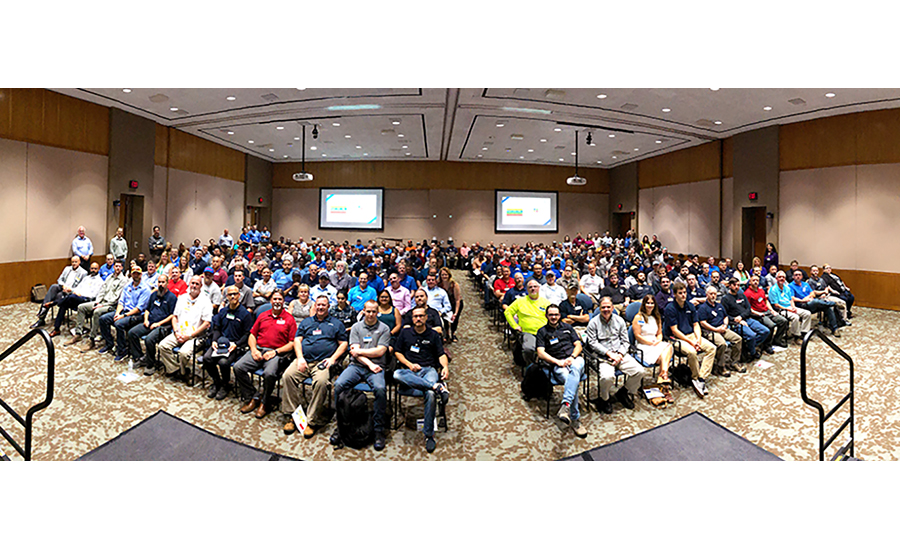
The integration business unit hosted an all hands meeting consisting of a full day of team building, introduction of the culture flag, blood drive, employee appreciation and training. // IMAGE COURTESY OF PAVION
But scaling from one family-owned business to a large blended family does take a lot of back-end work, something Post is very involved with.
In the past year the company has harmonized or is the process of implementing common IT, payroll, human resources and other systems that will soon get all the entities on the same platforms, all while keeping things “business as usual” for both employees and customers.
“We are transparent with the acquiring companies,” she explains. “We talk about business as usual because we don’t want to disrupt business. ERPs (enterprise resource planning) are mapped out to move quickly across the company to ensure business continuity.”
For Muncey, this policy made the acquisition an easy sell to his employees. “There were beneficial changes to payroll and 401(k), but regarding process and operations, there has been no change for the last eight months, which is what [Pavion] wanted. People don’t like change … but when you leave it neutral it is easy because it is business as usual. That was a real appeal when making the decision on the sale.”
5-Year Snapshot
Acquisitions Since June 2020
- The Security Division of EC&M Electrical, Richmond, Va.
- DavEd Fire Systems, Hackensack, N.J.
- Collaborative Technology Solutions (CTS), Morrisville, N.C.
- The Protection Bureau, Exton, Pa.
- Star Asset Security, Orlando, Fla.
- AFA Protective Systems, Syosset, N.Y.
- Structure Works, Dover Plains, N.Y.
- Enterprise Security Solutions (ESS), Ashburn, Va.
- Systems Electronics, Knightdale, N.C.
- Firecom, Woodside, N.Y.
Culture of Opportunity
The most important asset of any acquisition is its people, Post stresses. “Our synergy model is really around a few different things: How do we scale? How do we consolidate fleets and central stations? But without sounding cheesy, the people are the biggest commodity we get, because they have the knowledge of the business. It is critically important to keep the people that come with the acquisition.”
To that end, Pavion wastes no time in communicating openly and transparently with its newly acquired employees.
“As soon as they are acquired we give them access to all levels of management,” Post explains. “There is a portal for questions. We explain how something may be changing and how it may or may not affect them.”
This process is paramount, Oliveri says. “If we do it incorrectly it can destroy the value of what we purchased. We do it in a controlled manner. We will roll you into our IT systems, but in a manner and timeline you feel comfortable with. … Once that company comes on board we set up a timeline for every piece of that integration and hold to that timeline. We don’t force everyone to be on the same ERP in the same timeframe. We make sure we lay out that timeline to not disrupt the business.”
Another key role that was recently created to help with both this process and the regular employee hiring, onboarding and training is chief human resources officer, Dana Smith, who joined the company in April 2022.
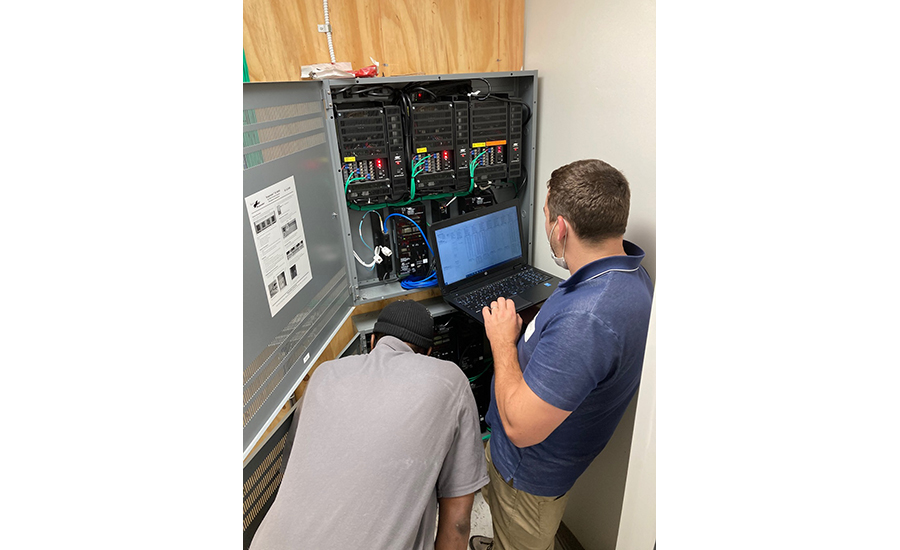
Pavion engineers program and test a new installation at a customer’s site. // IMAGE COURTESY OF PAVION
“The thing I think about when integrating that many acquisitions is to make sure you have a solid foundation,” he says. “From an HR perspective that codifies itself into making sure people understand who we are and who we aspire to be by helping people understand what our values are all about. Part of our strength comes from the fact that when you acquire a number of family-owned businesses you need to make sure you honor the legacy of those organizations and do your best to protect that while helping people understand what we are trying to transform into, and the benefits of that.”
Pavion also has a “culture flag” that helps remind employees constantly of these guiding principles, Rosenkoff adds. “People who ‘own’ the culture work above, beside and below us. You can’t expect the CEO to drive culture down without everyone in between believing and living those same cultural values. Every employee owns the culture here to help make this a great place to work.”
Oliveri also stresses the importance of “over-communicating” as the key to successful integration of acquired companies.
This approach has helped ensure that not only will approximately 98 percent of employees from the acquired companies come over to Pavion, but that they will ultimately stay.
“Our turnover post-acquisition has been better than the trends that the respective businesses had pre-acquisition,” Smith says.
One reason for that is the increased opportunities a larger organization offers employees. “There becomes opportunities within these companies to do greater things,” Oliveri says. “There is a good path for employees. A lot of them were part of a 50-100 person organization and now over 1,000. Someone with an interest in marketing, for example, can now explore that.”
This greater opportunity is true for customers as well, which is why in addition to its enormous growth through acquisition, Pavion also boasts about 15-20 percent in organic growth, Oliveri explains. “Customers are hard to get and easy to lose. We take good care of the customers we have and grow with them in new locations. We love to find customers that are national or global and gradually expand and show them our capabilities across the world. If we already do a great job with fire, let’s show them our security division; if we support them in the Americas, lets show them our reach across EMEA and APAC.”
The idea for the three business unit concept was implemented to allow each to run independently, driving down decision making and reducing bureaucracy. While they integrate IT, payroll, human resources and other systems across the business units to ensure consistency, Pavion also encourages them to cross sell, driving up opportunities across the business units, enabling customers to seamlessly take advantage of the breadth of the Pavion technology and services portfolio.
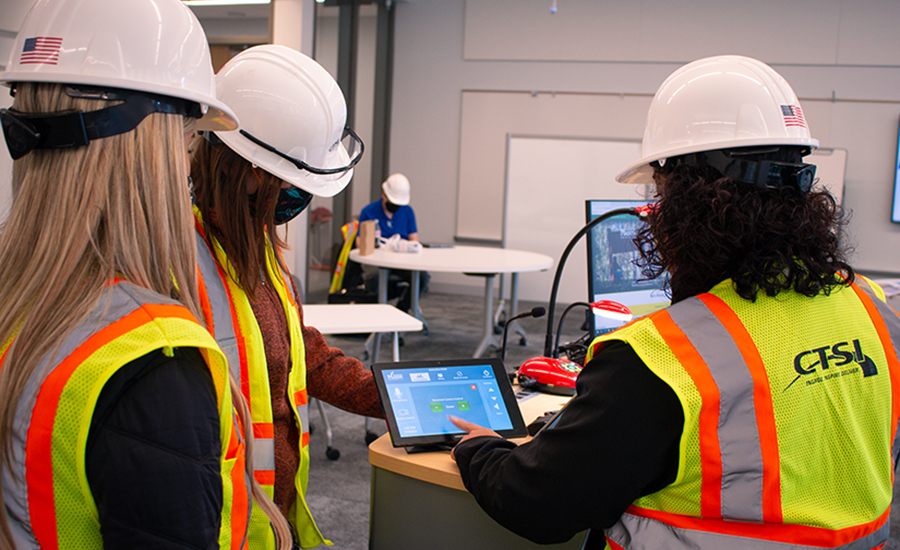
The Pavion User Experience Team reviews a touchpanel layout as part of the company's design, engineering and change management process. // IMAGE COURTESY OF PAVION
Cross-selling benefits customers by giving them “one hand to shake” for more of their systems and services, Seifert says. “It has been very positively received from the customers we have worked with. We have had multiple jobs where the other business units have been able to hop in and assist and expand the scope because of the acquisitions. [Customers] view this as a very positive thing because they like working with one entity. The goal is to continue delivering the same level of quality and experience to the customer, but doing it in further depth.”
This type of organic growth is a highlight for Post. “We have done a lot with acquisitions, but in many ways I don’t want that to overshadow the work that is being done with customers and field delivery and organic growth, she says. “That is the even better part of the story. Acquisition is about the wider enterprise. The services, customer experience and support that we deliver is really the shining moment.”
Managing a Worldwide Pandemic, Supply Chain Shortages & More Challenges
Any company taking on the challenge of acquiring and incorporating 10 companies in under two years would be in for a lot of work
But Pavion also did it in the midst of a global pandemic and resulting supply chain shortage. CEO Joe Oliveri says he has never seen anything like this.
“I’ll be honest. I have been in this business for 30 years. I have managed companies through recessions and this is the most challenging time any of us have ever operated in. We are getting hit from all angles: supply chain, employee shortages, aging workforce and pricing increases. It leads to inefficiencies in your business.
“Normally when you estimate a job you order the material, finish the job and move on. Now, you may only get a quarter of your product in. These jobs you were completing in one swoop before, now you are going back several times. The stress it has put on our employees is just incredible.”
One thing Pavion did to help relieve this burden was to put in place a professional procurement department to negotiate with suppliers and help source alternative products that meet the same specifications, Oliveri says. The company has also increased training for managers on how to deal with these situations.
“We went into this year thinking that by June we would start seeing things improve,” Susan Post says. “They are in some ways; but in others they are just not. We are now seeing new challenges. It is not uncommon for a supplier to not even give you an estimated delivery date. We looked at distributors and buyers and worked with them to give us some forecasting. We have weekly calls with our largest suppliers.”
“It has caused us to rethink how we go to market and how we get projects done,” Post adds.
For example, it is not uncommon to get anywhere from three to five price increases from vendors over the life of a project. At first Pavion was absorbing those costs. Now there is language in the contract stating the price is only fixed if they want to buy in advance, Post says.
Will Seifert sees an upside to all this, however.
“This has been a really crazy couple years as it relates to the whole planet. But I think it has also been a really great time to grow and present options to our employees and customers to show them that we are aligned with how they are changing, and that we are building our organization to better support them.”
A Company Evolving
Cross-selling initiatives have already started paying off. Post says there has been in excess of $15 million in opportunities in the past five months. She points to a lot of customer interest in the company’s subscription services which enables customers to consume their technology monthly as a service, and managed services such as video monitoring and cybersecurity.
“We can do so much remotely now,” she says. “It has been a big win in partnering with the ION247 team in the integration business unit. It has allowed them to expand their customer experience and offerings that they didn’t have an easy way to do before.”
Pavion plans to bring in training resources to help educate all the business units on cross selling, managed and subscription services to significantly accelerate growth in these types of opportunities.
On the human resources side, Pavion continues to build out its recruiting and retention policies, and just hired a director of talent to help with that, Oliveri says. “We are spending a lot of money outsourcing recruiting, so we wanted a little more control and to develop our own programs to find techs at trade schools, through the military, etc.
“Once we get past COVID-19, the No. 1 challenge anyone in our industry faces is the aging technical workforce.”
Smith is also very focused on this goal, and bringing in the idea of diversity, equity and inclusion, as well as environmental social governance, in a meaningful way. “When you think of those sorts of things … and take a position of being an industry leader, that translates into being an employer of choice. It translates into how we market ourselves from an employer branding perspective.”
Although much of their employee talent and resources in the past year have come from acquisitions, Pavion will also need to focus on the future employee pool going forward, which ties back to the messaging to the current employees, Smith says.
“We have the opportunity to build a lot of advocates internally to help deliver that message. When we are successful in doing that, it naturally helps you get more people into your business because employees will want to bring others they know along for the ride. When you have those things figured out and are doing them the right way it becomes a self-fulfilling prophecy.”
One recent initiative Smith and Post have worked on together involves standing up a women’s resource group within Pavion, Smith says. “[We want] to support all the women in our organization, especially those in supervisory roles so we can build that internal network and help the team learn from one another and identify opportunities. Those are the sorts of things we think about.”
In addition to the internal plans, Pavion is very much still in acquisition mode, Katz says. He is working on seven right now (as of September). “Two of them will probably close in the next 60 days and one more by the end of the year. All of them are strategic in terms of where we want to be.
“Now that we have built our fire and security platform and we have a solid worldwide presence, we are being more selective about opportunities than we were before,” he says. “We have the opportunity now to look in geographical areas where we want to be able to self-perform work. … We covered the entire East Coast. Now we are closing gaps towards the central and west and following our global customers in countries where they need us most. That is our current strategy.”
Each business unit leader is also involved in the acquisition process going forward, giving suggestions and feedback on what they need.
“I have to run it and own it, so I get input on that,” Muncey says. “It is not just a matter of what I have today, but how we incorporate the next couple and do them properly. The goal is to incorporate the changes to date and overlay other new companies on top, rolling them into the same format and process.”
Despite the daunting task, Rosenkoff is confident in Pavion’s ability to rise to the challenge. “I have worked in small, medium and large enterprise businesses, and we have an awesome team. We have some of the best in the business, and a great private equity firm that has helped us really achieve great things at an extremely fast pace, and we couldn’t have done any of that without them. We are operating and organically growing a fantastic integration business, and we have the leadership team and employees to be amazingly successful.”
Oliveri is excited about the future.
“This is a really exciting time in the security industry,” he says. “Our goal here is to build a bigger company but make sure we don’t fall into pitfalls others have. We want to learn from other’s mistakes and build the biggest and best integration company out there, while also giving our employees the right experience, taking care of our customers, having the right culture and making sure we have fun. It is a challenging time right now, but it will get better. Our job is to make sure the workforce doesn’t get too frustrated with all the challenges.”


